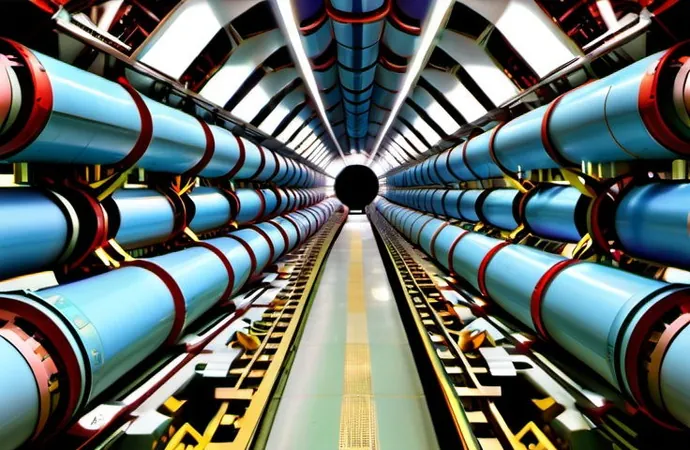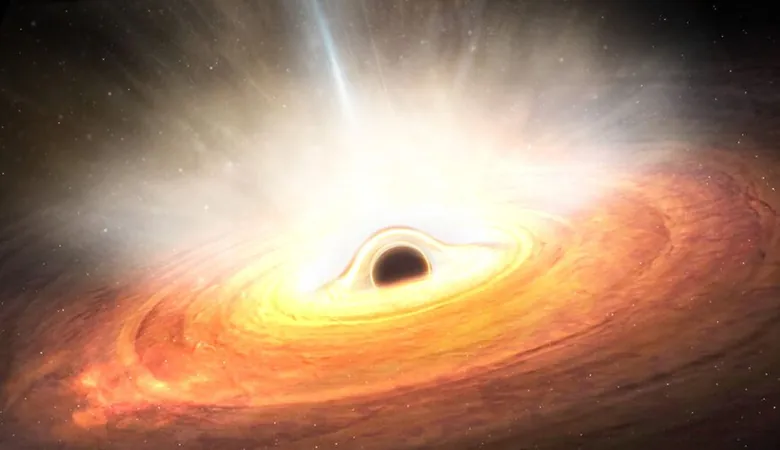
CERN Physicists on a Mission for 'New Physics' with the Large Hadron Collider: Latest Findings Unveiled!
2024-11-12
Author: Emma
Introduction
Physicists at the European Organisation for Nuclear Research (CERN) have recently shared exciting updates from their relentless pursuit of “new physics” using the Large Hadron Collider (LHC). While the anticipated breakthrough revealing phenomena beyond the Standard Model remains elusive, the team asserts that their findings provide critical insights that will shape future experiments post-upgrades to the LHC.
The Large Hadron Collider (LHC)
The LHC was built over a decade, from 1998 to 2008, at a staggering cost of more than $9 billion. This monumental project has united over 10,000 scientists from across the globe, solidifying its status as one of the most intricate and expensive scientific endeavors in history. Its pinnacle achievement came in 2012 with the discovery of the Higgs boson, the particle that gives mass to other particles and crucial to the Standard Model of particle physics.
Current Findings and Challenges
A statement from the research team highlights a “persistent absence” of any signals pointing to physics beyond the Standard Model. This lack of evidence has left many in the scientific community disappointed but undeterred. The ATLAS detector team, driven by the quest for knowledge, decided to re-examine archived data searching specifically for Higgs boson pairs, which are predicted by the Standard Model but are expected to occur with greater frequency according to various new physics theories.
Dr. Bartlomiej Zabinski from the Polish Academy of Sciences emphasized the challenge: “In proton collisions at the LHC, Higgs bosons appear so infrequently that not a single event of Higgs boson pair production has been detected. This rarity hampers our studies of their interactions.”
Advanced Techniques and Future Outlook
To tackle this obstacle, researchers utilized advanced physics simulation software to create digital models of Higgs boson pair events. Subsequently, they applied sophisticated machine learning techniques to analyze vast data sets and identify potential signals corresponding to these simulated occurrences. Despite their meticulous search, the results were disheartening; no signs indicated the presence of new physics.
However, the researchers remain optimistic. They clarify that their work, while not yielding immediate findings, has provided valuable information to refine future experimental searches. “This result does not eliminate the possibility of ‘new physics’ phenomena,” Dr. Zabinski noted. “It merely suggests that their possible effects on Higgs boson pair production are too subtle to be detected with the data we currently have.”
Looking Ahead
Looking forward, the LHC is set for significant upgrades aimed at boosting the intensity of proton beams, which will result in more collision events—crucial for spotting the rare Higgs boson pairs. Experts believe that these enhancements could allow researchers to identify double Higgs production events as early as the next decade, providing crucial evidence to validate today's theoretical predictions.
Conclusion
As the quest for answers continues, physicists and enthusiasts alike are left wondering: what groundbreaking discoveries lie ahead in the realm of high-energy physics? Stay tuned as CERN scientists gear up for a new chapter in the pursuit of understanding the universe!









 Brasil (PT)
Brasil (PT)
 Canada (EN)
Canada (EN)
 Chile (ES)
Chile (ES)
 España (ES)
España (ES)
 France (FR)
France (FR)
 Hong Kong (EN)
Hong Kong (EN)
 Italia (IT)
Italia (IT)
 日本 (JA)
日本 (JA)
 Magyarország (HU)
Magyarország (HU)
 Norge (NO)
Norge (NO)
 Polska (PL)
Polska (PL)
 Schweiz (DE)
Schweiz (DE)
 Singapore (EN)
Singapore (EN)
 Sverige (SV)
Sverige (SV)
 Suomi (FI)
Suomi (FI)
 Türkiye (TR)
Türkiye (TR)